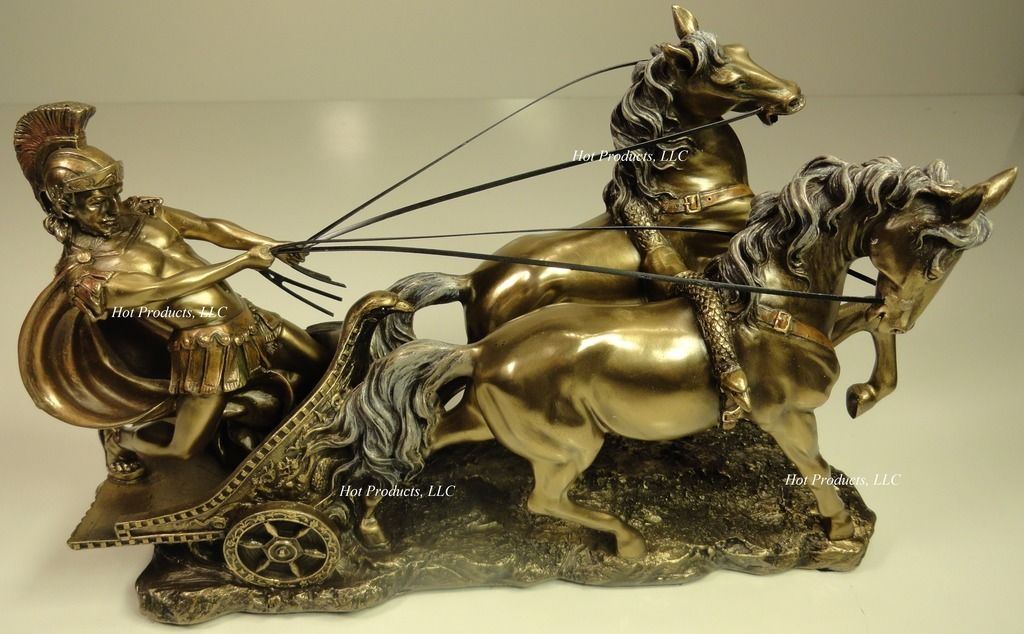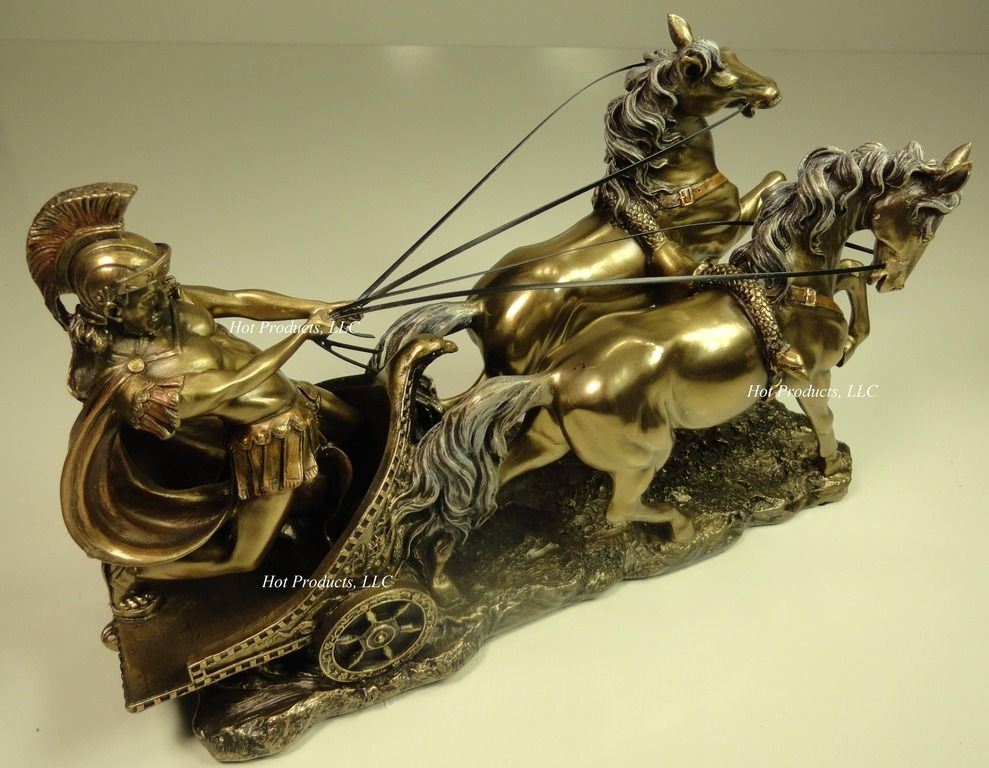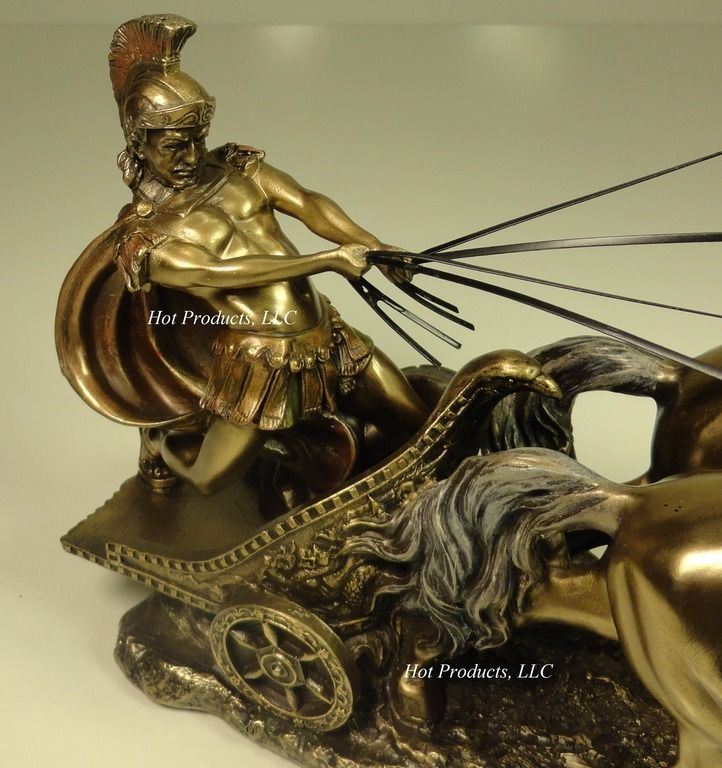ROMAN GLADIATOR CHARIOT Sculpture Statue Antique Bronze Color
ROMAN GLADIATOR CHARIOT Sculpture Statue Antique Bronze Color
Couldn't load pickup availability
Brand:
This listing is for a brand new COLD CAST BRONZE RESIN* Roman Chariot statue in a a rich antque bronze finish (see brief history about the Roman Chariot below). The superb detailing and hand painted accents really bring this statue to life. Great addition to anyone's decor!
Dimensions: 10" x 3.5" x 6.5" High
*What is cold cast bronze? Cold cast bronze is a when real powdered bronze metal is mixed in with resin. It is then cast into a mold creating a very realistic replica of a solid bronze piece. This process creates a high quality piece with much greater detail than you will see with a solid bronze piece & at an exceptional price. Most pieces will also have some hand painting to enhance the detail and seal the finish for a greater life.
Chariot racing was one of the most popular ancient Greek, Roman, and Byzantine sports. Chariot racing was often dangerous to both driver and horse as they frequently suffered serious injury and even death, but generated strong spectator enthusiasm. In the ancient Olympic Games, as well as the other Panhellenic Games, the sport was one of the most important equestrian events. Each chariot was pulled by 4 horses.
In the Roman form of chariot racing, teams represented different groups of financial backers and sometimes competed for the services of particularly skilled drivers. These teams became the focus of intense support among spectators, and occasional disturbances broke out between followers of different factions. The conflicts sometimes became politicized, as the sport began to transcend the races themselves and started to affect society overall. This helps explain why Roman and later Byzantine emperors took control of the teams and appointed many officials to oversee them.
The sport faded in importance after the fall of Rome in the West, surviving only for a time in the Byzantine Empire, where the traditional Roman factions continued to play a prominent role for some time, gaining influence in political matters. Their rivalry culminated in the Nika riots, which marked the gradual decline of the sport.
Minimum Recommended Age: 12 Years old. CHOKING HAZARD: Containes small parts.
Share








